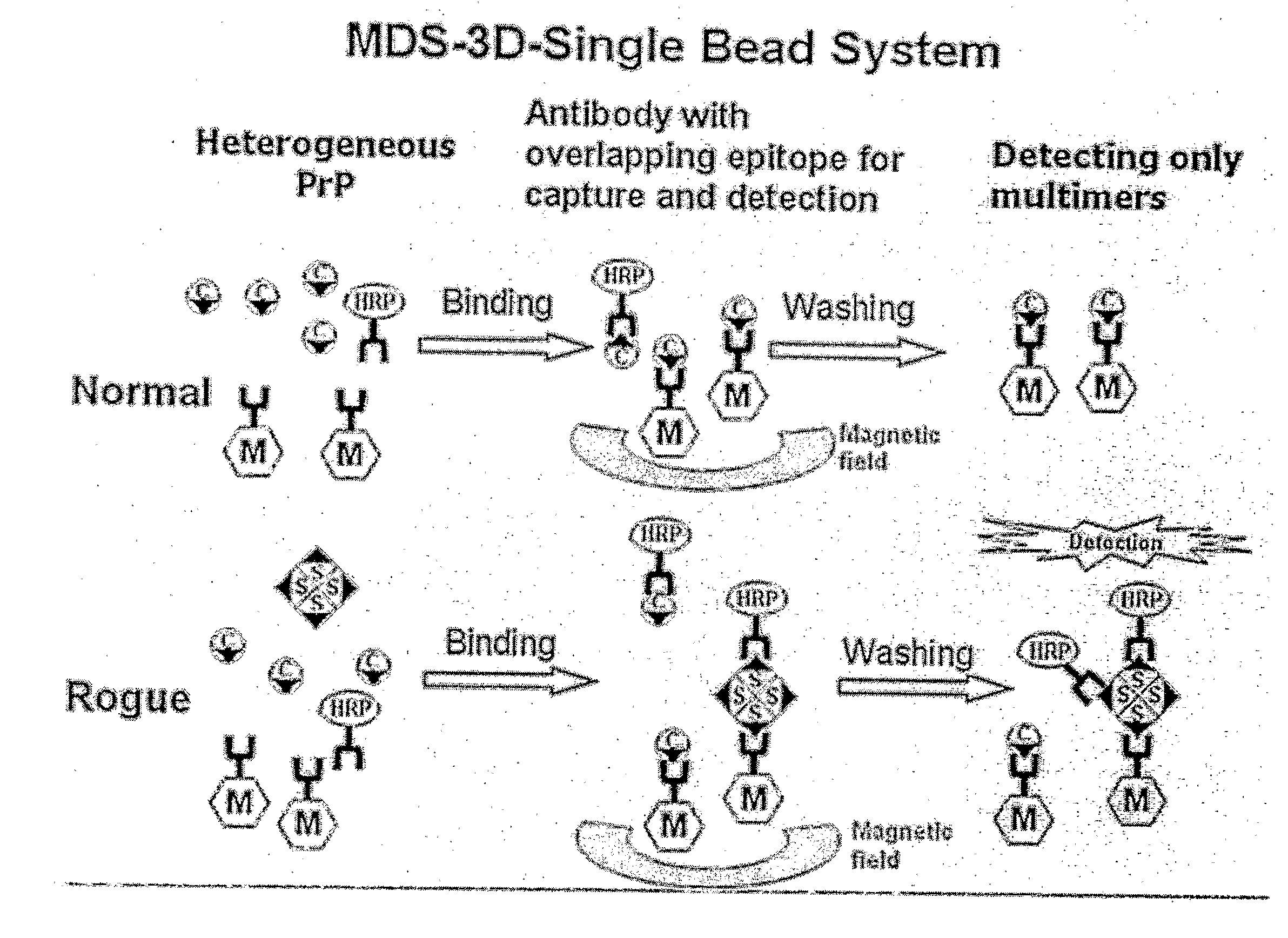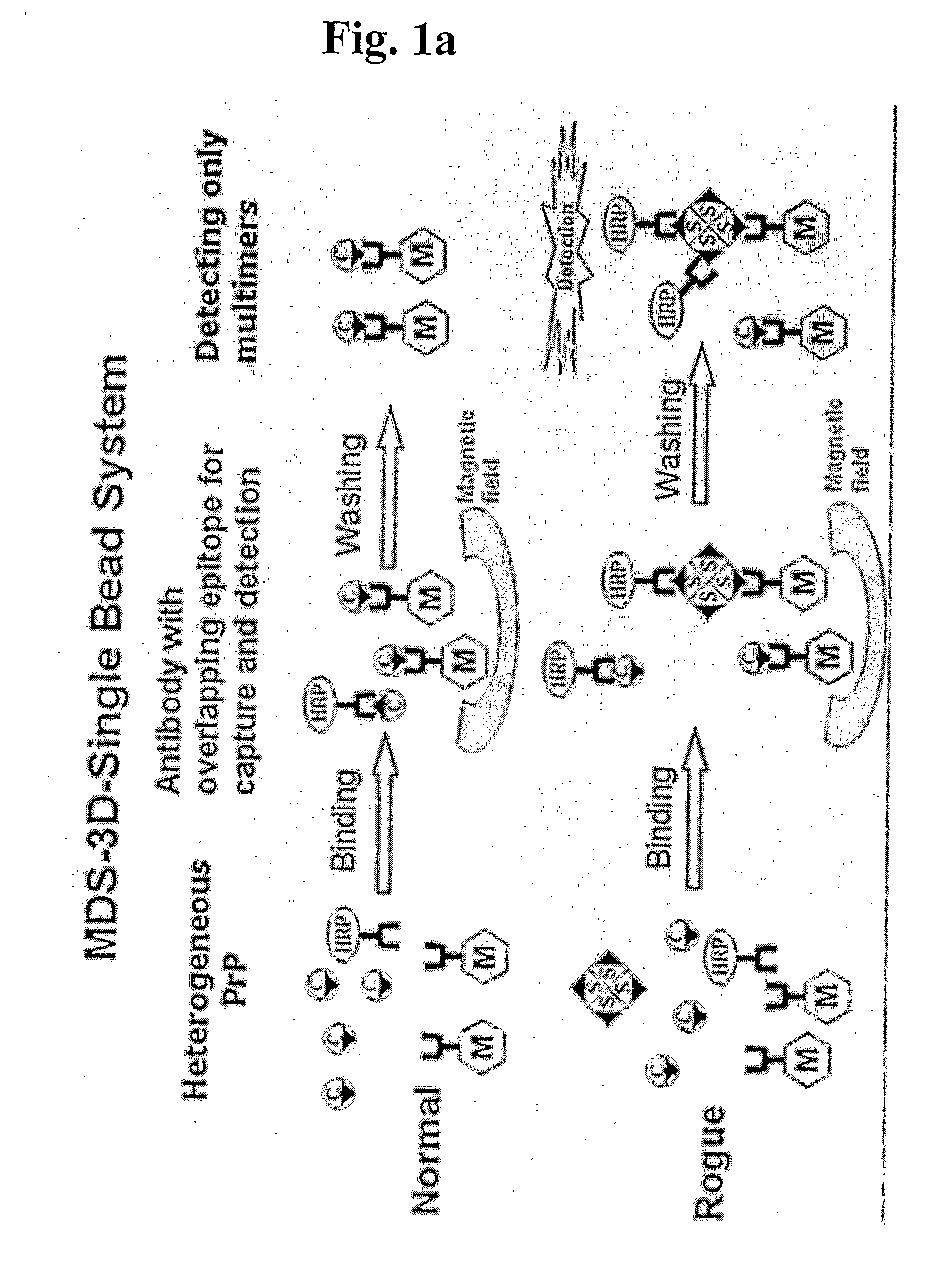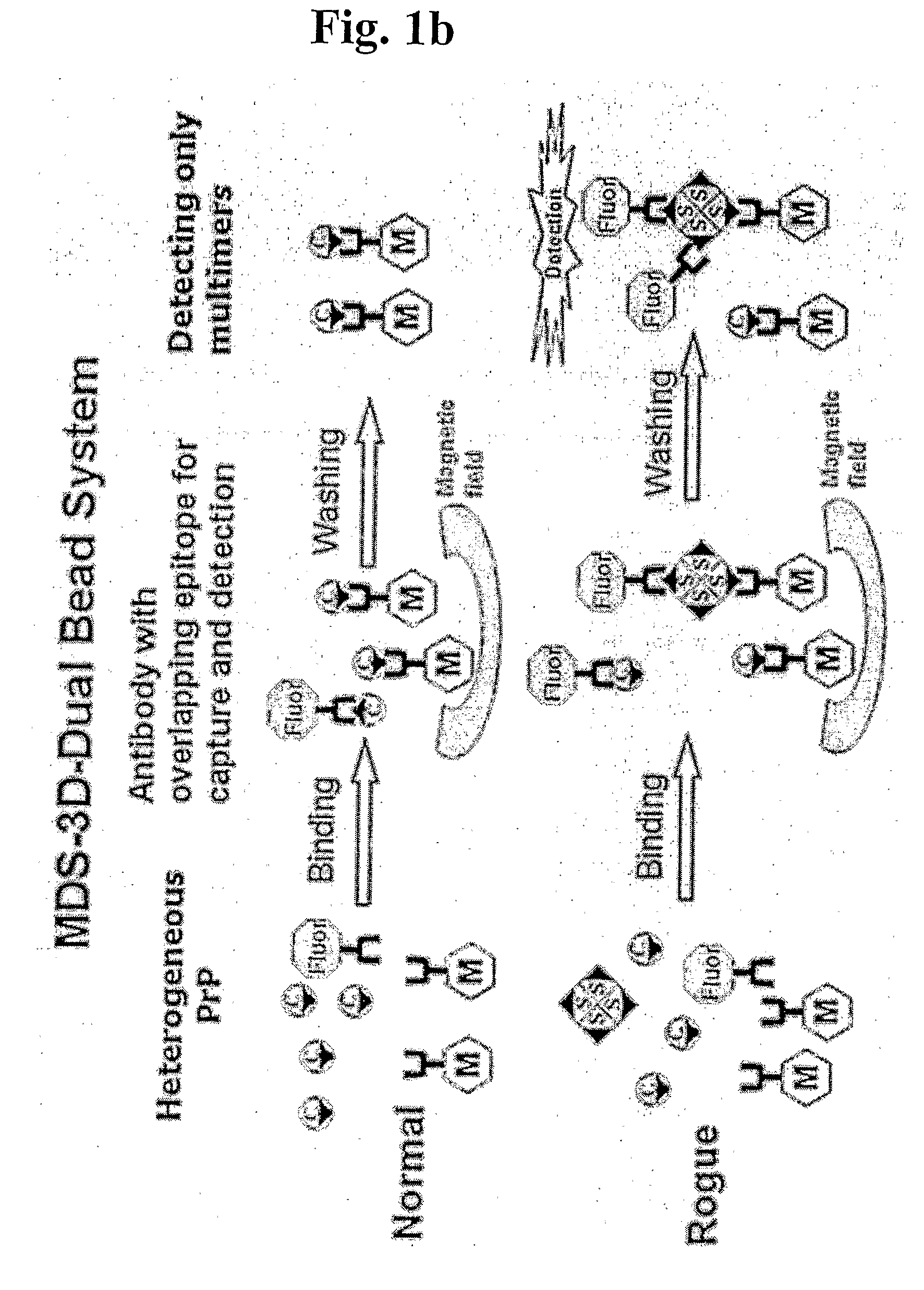Methods for differentially detecting a multimeric form from a monomeric form of a multimer-forming polypeptide through three-dimensional interactions
a multimeric form and monomeric technology, applied in the field of three-dimensional interactions for differential detection of multimeric forms from monomeric forms of multimer-forming polypeptides, can solve problems such as difficult analysis of the conformational transition that leads to the formation of prpsup>res /sup>or characterization
- Summary
- Abstract
- Description
- Claims
- Application Information
AI Technical Summary
Problems solved by technology
Method used
Image
Examples
example i
Detection of Multimeric PrP in Plasma Using MDS-3D-Sïngle Bead System
[0083]2705 μl of sheep plasma, 22.5 μl of recombinant multimeric sheep PrP (genotype ARQ, 120-fold diluted) and 3605 μl of 2.5× detergent (including 3% Triton X-IOO, 1.5% Na deoxycholate and 0.25% sarkosyl) were mixed to prepare a sample. The negative control was also prepared to contain 22.5 μl of PBS instead of the recombinant multimeric sheep PrP. Capturing antibody-conjugated magnetic beads were prepared in which 1 μg of capturing antibodies was bound to 2.5 μl of magnetic beads. The capturing antibody bound to magnetic beads is 3E7 or MA1-750 monoclonal antibodies. The epitope against the 3E7 monoclonal antibody is an amino acid sequence spanning 140-160 of PrPc (with reference to a bovine prion sequence) or 132-152 (with reference to a sheep prion sequence), which is found to be a non-repeated sequence in prion. The MA1-750 antibody recognizes specifically an epitope on PrPc, Ser-Arg-Pro-Leu-Ile-His-Phe-Gly-S...
example ii
Determination of Buffer Type Suitable in MDS-3D-Sïngle Bead System
[0089]To determine a suitable buffer type in the MDS-3D-Single Bead System of this invention, the magnetic-bound capturing antibody, 3E7-bead and detection antibody, T2-HRP were used at a weight ratio of 1 to 1 (0.8 μg:0.8 μg, substantially correspond to a mole ratio of 1 to 1) for performing the MDS-3D-Single Bead System. Plasma samples were prepared as follows: 120 μl of 10% Triton X-100 in d-H2O, 580 μl of buffer (TAPS, TBST or Tricine, pH 8.0) and 300 μl of sheep plasma showing clinical signs to have PrPsc were mixed to give 1 ml of the total volume of plasma sample containing 1.2% Triton X-100 and 30% plasma. 2 μl (0.8 μg) of 3E7-conjugated magnetic bead as capturing antibodies and 200 μl (0.8 μg) of T2-HRP (4 μg / ml in TBST) as detection antibodies were mixed to prepare a mixed antibody. 200 μl of the mixed antibody were added to 1 ml of the plasma sample and incubated for 1 hr at 37° C. The magnetic field was th...
example iii
Detection of Multimeric PrP in Plasma Using MDS-3D-Dual Bead System
[0090]120 μl of 10% Triton X-100, 730 μl of TBST buffer (pH 8.0) and 150 μl of sheep plasma were mixed to give 1 ml of plasma sample containing 1.2% Triton X-100 and 15% plasma. 4 μl of 3E7-conjugated magnetic bead as capturing antibodies, 2 μl of MAI 750-conjugated fluorescence latex bead as detection antibodies and 200 μl of TBST buffer were mixed to prepare a mixed antibody (3E7-bead:MAI 750-fluorescence bead, 2:1). 200 μl of the mixed antibody were added to 1 ml of the plasma sample and incubated for 1 hr at 37° C. The magnetic field was then applied to the reaction mixture to separate magnetic beads, followed by washing the beads three times with TBST. Finally, the fluorescent signal was detected. As represented in FIG. 4, the MDS-3D-Dual Bead System permits to detect differentially PrPSc in plasma.
PUM
 Login to View More
Login to View More Abstract
Description
Claims
Application Information
 Login to View More
Login to View More - R&D
- Intellectual Property
- Life Sciences
- Materials
- Tech Scout
- Unparalleled Data Quality
- Higher Quality Content
- 60% Fewer Hallucinations
Browse by: Latest US Patents, China's latest patents, Technical Efficacy Thesaurus, Application Domain, Technology Topic, Popular Technical Reports.
© 2025 PatSnap. All rights reserved.Legal|Privacy policy|Modern Slavery Act Transparency Statement|Sitemap|About US| Contact US: help@patsnap.com



